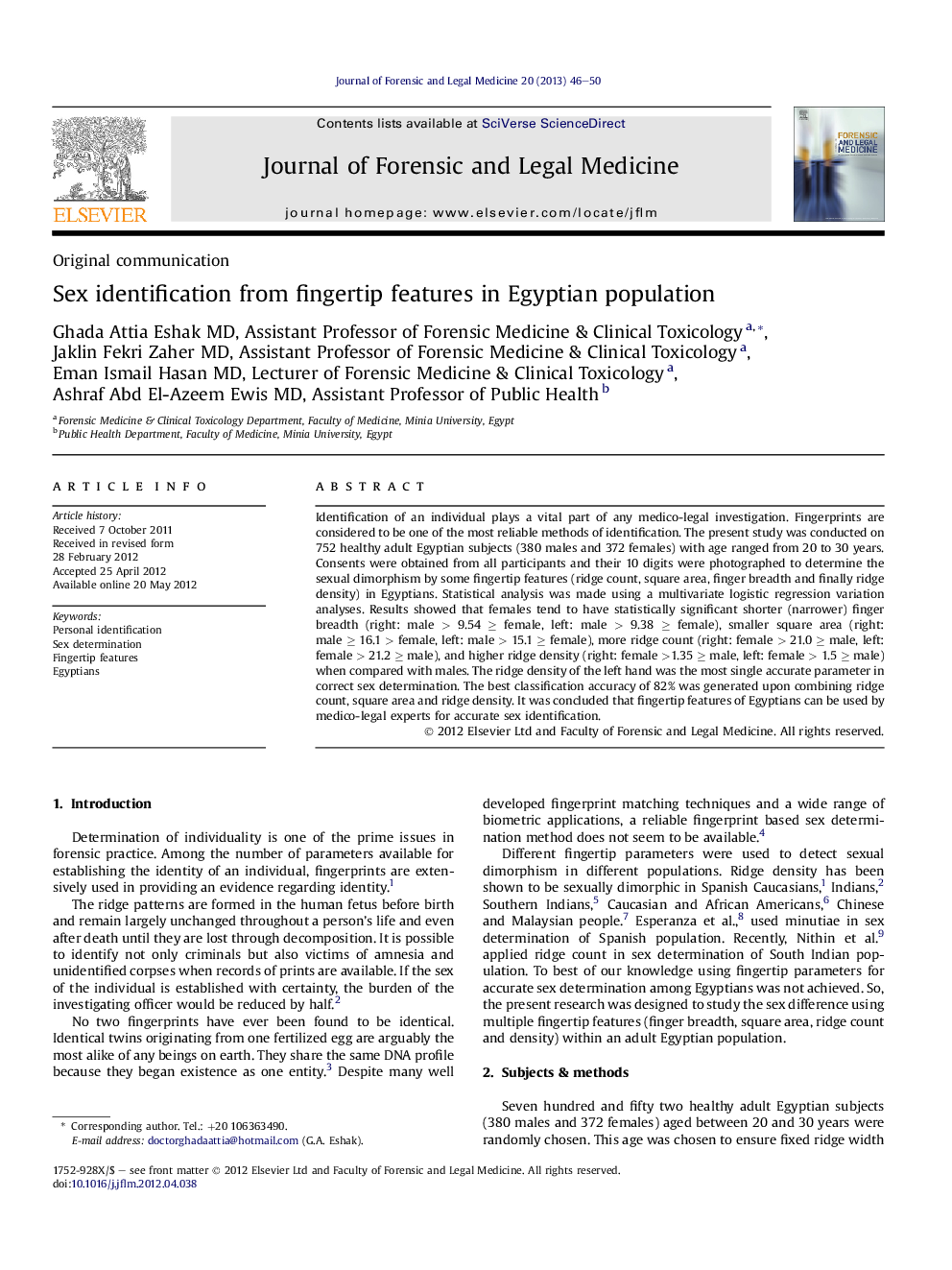| Article ID | Journal | Published Year | Pages | File Type |
|---|---|---|---|---|
| 102484 | Journal of Forensic and Legal Medicine | 2013 | 5 Pages |
Identification of an individual plays a vital part of any medico-legal investigation. Fingerprints are considered to be one of the most reliable methods of identification. The present study was conducted on 752 healthy adult Egyptian subjects (380 males and 372 females) with age ranged from 20 to 30 years. Consents were obtained from all participants and their 10 digits were photographed to determine the sexual dimorphism by some fingertip features (ridge count, square area, finger breadth and finally ridge density) in Egyptians. Statistical analysis was made using a multivariate logistic regression variation analyses. Results showed that females tend to have statistically significant shorter (narrower) finger breadth (right: male > 9.54 ≥ female, left: male > 9.38 ≥ female), smaller square area (right: male ≥ 16.1 > female, left: male > 15.1 ≥ female), more ridge count (right: female > 21.0 ≥ male, left: female > 21.2 ≥ male), and higher ridge density (right: female >1.35 ≥ male, left: female > 1.5 ≥ male) when compared with males. The ridge density of the left hand was the most single accurate parameter in correct sex determination. The best classification accuracy of 82% was generated upon combining ridge count, square area and ridge density. It was concluded that fingertip features of Egyptians can be used by medico-legal experts for accurate sex identification.
